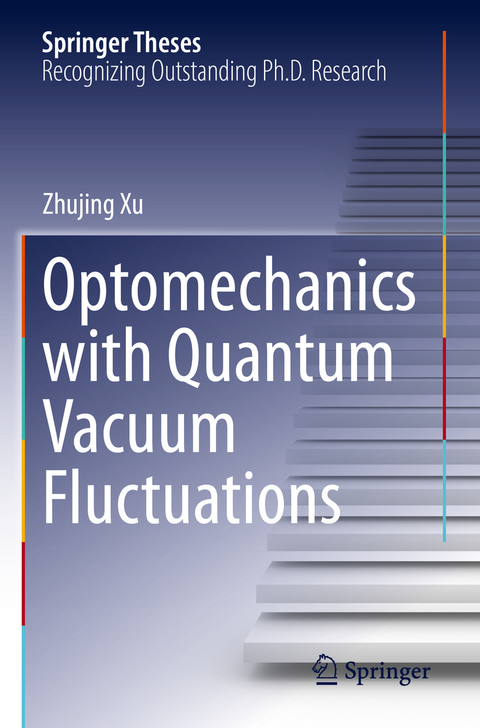
Optomechanics with Quantum Vacuum Fluctuations
Springer International Publishing (Verlag)
978-3-031-43054-1 (ISBN)
This thesis presents the first realization of non-reciprocal energy transfer between two cantilevers by quantum vacuum fluctuations. According to quantum mechanics, vacuum is not empty but full of fluctuations due to zero-point energy. Such quantum vacuum fluctuations can lead to an attractive force between two neutral plates in vacuum - the so-called Casimir effect - which has attracted great attention as macroscopic evidence of quantum electromagnetic fluctuations, and can dominate the interaction between neutral surfaces at small separations. The first experimental demonstration of diode-like energy transport in vacuum reported in this thesis is a breakthrough in Casimir-based devices. It represents an efficient and robust way of regulating phonon transport along one preferable direction in vacuum. In addition, the three-body Casimir effects investigated in this thesis were used to realize a transistor-like three-terminal device with quantum vacuum fluctuations. These two breakthroughs pave the way for exploring and developing advanced Casimir-based devices with potential applications in quantum information science. This thesis also includes a study of the non-contact Casimir friction, which will enrich the understanding of quantum vacuum fluctuations.
Zhujing Xu is currently a Postdoctoral Fellow at Harvard University. She received her B.S. in Physics from University of Science and Technology of China in 2016, and her Ph.D. in Physics from Purdue University in 2022. She has worked on levitated optomechanics and solid-state spins, both in experiments and theory from 2016-2018. In 2018, she started to build a vacuum AFM system in the lab to study quantum vacuum fluctuations and demonstrate phonon energy transfer across the vacuum, which is the content of this thesis.
Chapter 1: Introduction.- Chapter 2: Measurement and Calculation of Casimir Force.- Chapter 3: Experimental Realization of a Casimir Diode: Non-Reciprocal Energy Transfer By Casimir Force.- Chapter 4: Experimental Realization of a Casimir Transistor: Switching and Amplifying Energy Transfer In A Three-Body Casimir System.- Chapter 5: Proposal On Detecting Rotational Quantum Vacuum Friction.- Chapter 6: Proposal On Detecting Casimir Torque.- Chapter 7: Conclusion And Outlook.
| Erscheinungsdatum | 19.10.2024 |
|---|---|
| Reihe/Serie | Springer Theses |
| Zusatzinfo | XV, 112 p. 64 illus., 62 illus. in color. |
| Verlagsort | Cham |
| Sprache | englisch |
| Maße | 155 x 235 mm |
| Themenwelt | Naturwissenschaften ► Physik / Astronomie ► Optik |
| Naturwissenschaften ► Physik / Astronomie ► Quantenphysik | |
| Naturwissenschaften ► Physik / Astronomie ► Theoretische Physik | |
| Technik | |
| Schlagworte | Casimir-based device • Casimir effect • quantum optomechanics • three-body Casimir interaction • vacuum fluctuation • vacuum friction |
| ISBN-10 | 3-031-43054-9 / 3031430549 |
| ISBN-13 | 978-3-031-43054-1 / 9783031430541 |
| Zustand | Neuware |
| Haben Sie eine Frage zum Produkt? |
aus dem Bereich


